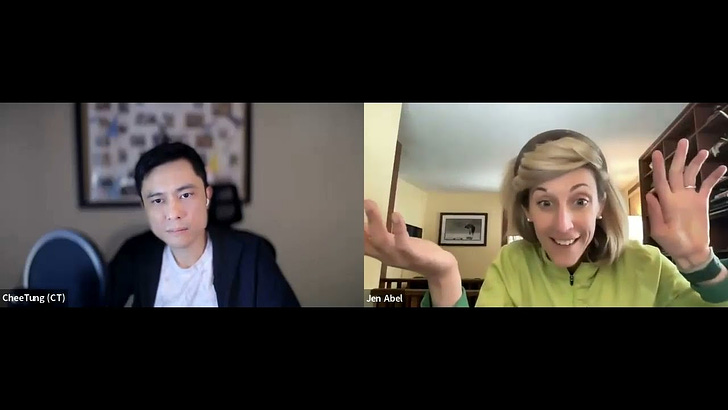In an age where data dictates how companies grow and succeed, the balance between harnessing that data effectively and being overwhelmed by the sheer volume can make or break businesses, especially in the direct-to-consumer (DTC) space.
The latest episode of the Silicon Jungle Chronicles podcast provides an exclusive dive into the entrepreneurial journey of Saptarshi Nath, co-founder and CEO of Airboxr, and his move from consulting to pioneering an innovative tech solution for DTC brands.
Through his conversation with me, Saps sheds light on crucial strategies for startups, the evolution of market fit, and the ins and outs of developing a product that seamlessly integrates into existing user behavior.
Key Takeaways
- Startup Flexibility: If your users are already used to a way of working, iterate and find ways to integrate yourself deeper into their workflow. Don’t fight to change their behavior, especially in the early days.
- Market Presence: Geographical proximity to your target market, along with community engagement, can provide invaluable insights and drive growth.
- SEO and Content Strategy: An organic approach to marketing, primarily through useful content that addresses customer pain points, still holds significant weight in acquiring users as opposed to cold outreach, especially in the US market.
One Secret Weapon of being a Startup: Flexibility
One of the recurrent themes in this dialogue was the critical nature of flexibility in a startup's journey. Nath spoke candidly about his experiences in shutting down projects that didn't align with the team's strengths and the needs of their user base.
“But this product has been live publicly for one year, another six months before that we had been running a controlled pilot with six different brands. So this has helped us identify exactly the segment of folks that we are going to deep dive into.”
This approach is not about indecisiveness but about finding the right fit in the market. It suggests that a calculated and thoughtful approach to pivoting can be more fruitful than stubbornly sticking to a failing idea.
Furthermore, Nath's emphasis on ingraining into existing user behavior rather than attempting to alter it underscores a more nuanced understanding of customer acquisition:
“Do not try to change human behavior. You should try to embed yourselves into whatever they're already doing... that is the core philosophy why we are so focused on spreadsheets today."
No Surprise: Be Where Your Customers Are
Another insightful discussion point was the importance of being physically present in the market you're serving. Nath's experience showed that insights gleaned from operating in the same timezone as users could be far more telling than second-hand data or reports.
"I definitely say being in the same market, or at least the same time zone is very important...I've learned more being in New York in two months than I've learned serving New York from Singapore for the last six..."
This proximity allows for deeper immersion into community behaviors and preferences, particularly valuable for B2B businesses within regional markets. Engaging with local DTC communities and being open to introductions within the network were highlighted as key strategies for establishing and scaling a relevant presence.
Organic Customer Acquisition Channels Haven’t Gone Out of Style
With the ever-changing landscapes of marketing and advertising regulations, a constant that remains is the power of organic search. As Saptarshi Nath reminisces his venture's journey, it's clear that content creation and SEO have been at the forefront of their user acquisition efforts.
“Even today, about 90% of the traffic on the website is organic through Google. And about 80% of people who sign up say that they heard of us on Google.”
The importance Nath places on creating content that not only draws users in but also educates them on the practical applications of their tools, speaks volumes about the timeless efficacy of good content. Having a robust content strategy that targets user's pain points not only attracts the right audience but also establishes the brand's authority and trustworthiness in the space.
Airboxr's journey reaffirms that while market patterns may shift, some foundational strategies—like understanding user behavior, tapping into the right communities, and offering valuable content—remain key to capturing and engaging your target demographic.
Be Part of the Airboxr Journey
Airboxr is fundraising in a Seed round to accelerate their momentum in the US market, that is already 30% committed. If you want to learn more about Saps or Airboxr to consider being part of the round, drop me a note and I'd be happy to connect you.
Disclaimer:
The content provided in this podcast is intended for informational purposes only and should not be construed as financial advice. The discussions, opinions, and information shared are based on general knowledge and research at the time of recording. Listeners are encouraged to conduct their own research or consult with a qualified financial advisor before making any investment decisions. The hosts and guests of this podcast are not responsible for any actions taken based on the information presented. Investing involves risk, and individuals should carefully consider their own financial situation and risk tolerance before making any investment choices.
This Substack is where I write about our experience expanding from a stable, growing market in Asia, to competing in the largest SaaS market in the world.
We’d like to invite you to join us on this adventure by subscribing:
Thanks for reading Silicon Jungle Chronicles! Subscribe for free to receive new posts and support my work.
What to expect?
📊 Comparative Data Analysis: Deep dives into metrics and strategies, comparing and contrasting SaaS practices between East and West.
🎙 Podcasts: Candid chats with industry leaders, unveiling the challenges and triumphs of the startup journey.
🎤 Exclusive Interviews: Conversations with SaaS pioneers and innovators, sharing their unique insights and visions.
✍️ Opinion Pieces: My take on trends, disruptions, and the future of tech in these dynamic regions.
Who's this for?
• Founders seeking strategies and stories from dual perspectives.
• Investors eager for a fresh, grounded take on the evolving SaaS landscape.
• Tech enthusiasts, analysts, or anyone curious about the heartbeat of startup ecosystems in both the East and West.
Thanks for reading and do share with someone you think could benefit from it!












